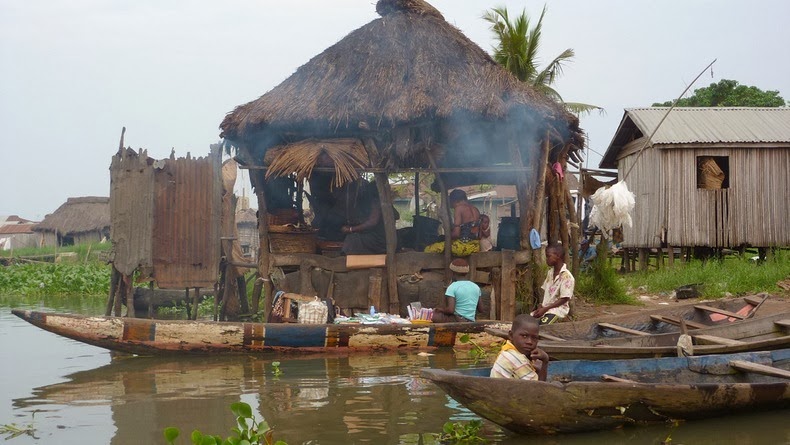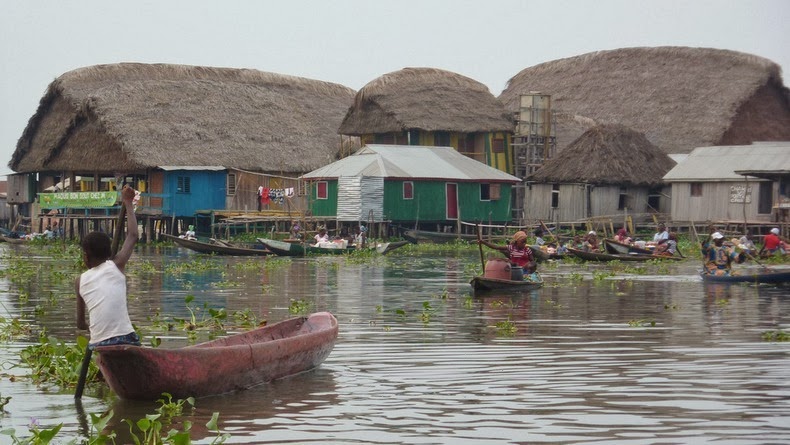Ganvie is a peculiar village built on Lake Nokoué, just an hour north of the city of Cotonou, the administrative capital and the largest city of the Republic of Benin – a country in West Africa. The entire village stands on slits in the middle of the lake. With a population of around 20,000 people, it is probably the largest lake village in Africa and as such is very popular with tourists.
It's commonly believed that the Tofinu people settled here in the sixteenth or seventeenth centuries and built their lake village to escape slavers who came from the Fon tribe and were not allowed to enter water for religious reasons. This made the lagoon a safe territory for other tribes. The Tofinu people built their homes on the water and in the roughly 500 years that have passed since, Ganvie has developed an intricate and prosperous culture within the constraints of life on the lake.
All of Ganvie's houses, shops and restaurants are built on wooden stilts several feet above the water. Ganvie also has a floating market where the ladies of the village display their wares. The town has one complete patch of land, which is the site of the village school. All the soil was imported by the people of Ganvie in their boats, and they have set about importing much more so they can also create a proper cemetery.
Most of the people rely on fishing and tourism for their income. Fisherman trap and breed fish using underwater fences made from bamboo and nets. Some villagers also rear a few domesticated land-animals that live on plots of grass that spring up from the water. There are a couple of restaurants where you can stop to eat some delicious fresh fish and rice and a few scattered shops selling tourist trinkets.
Also see: The Floating Islands of Lake Titicaca
























Before I "stop to eat some delicious fresh fish", I think I'd like to know how they handle 20,000 people worth of sewage.
ReplyDeleteSeriously, 2.6 billion people on the planet have no sanitation whatsoever, apparently. Just thought you'd like to know.
http://www.livescience.com/16713-7-billion-people-world-poop-problem.html
No, he's saying that he doesn't want to eat fish caught from the same water source used as the village toilet, you stupid non-American.
DeleteA school is the only one of Ganvie’s buildings that exists on land, although a cemetery mound is currently under construction. The few domesticated land-animals they maintain live on plots of grass that spring up from the water. Without a good supply of domesticated animals, Ganvie relies on a complicated network of underwater fencing to corral and farm various fish populations.
ReplyDeleteIn all non offensive seriousness, whats the sewage condition? Is it maintainable or from a 1st hand pov is it an issue that's worsening?
ReplyDelete